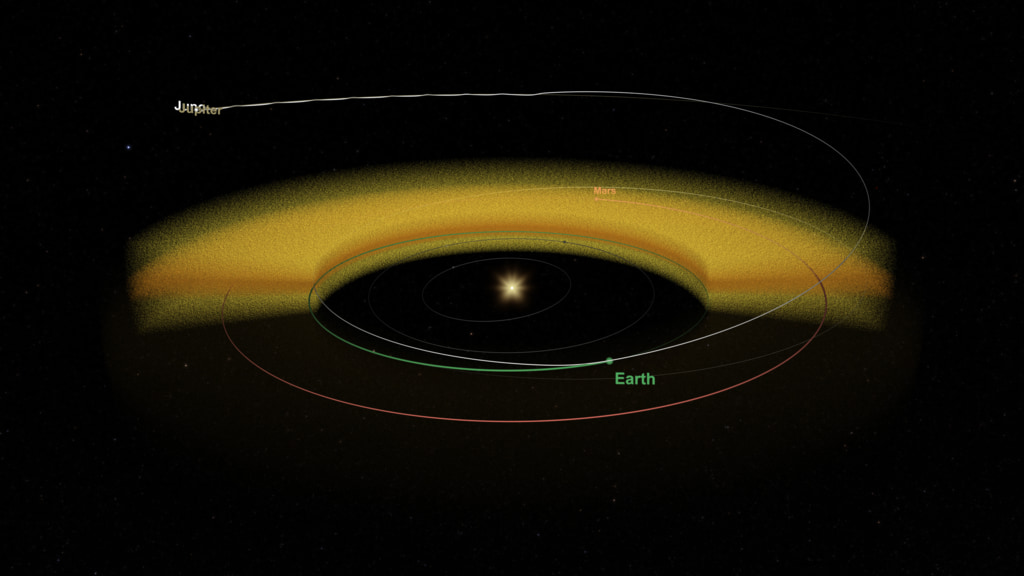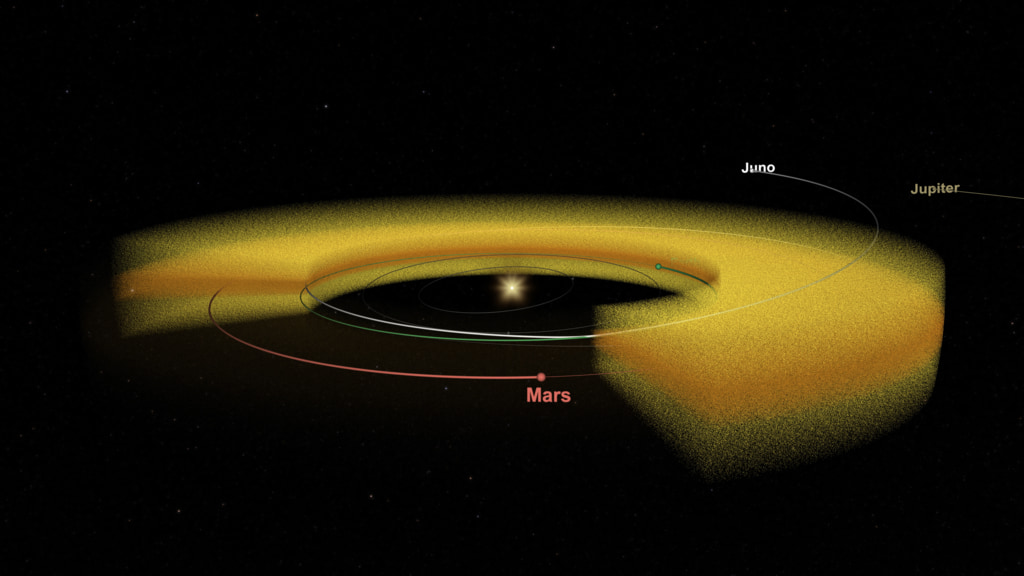Juno Interplanetary Dust: Animations
Juno during its outbound cruise to Jupiter. Available with and without text.
Look up to the night sky just before dawn, or after dusk, and you might see a faint column of light extending up from the horizon. That luminous glow is the zodiacal light, or sunlight reflected toward Earth by a cloud of tiny dust particles orbiting the Sun. Astronomers have long thought that the dust is brought into the inner solar system by a few of the asteroid and comet families that venture in from afar. But now, a team of Juno scientists argues that the planet Mars may be the culprit. An instrument aboard the Juno spacecraft serendipitously detected dust particles slamming into the spacecraft during its journey from Earth to Jupiter. The impacts provided important clues to the origin and orbital evolution of the dust, resolving some mysterious variations of the zodiacal light.
This page provides artist concept animations of Juno during its trek to Jupiter, and its observations of interplanetary dust impacts along the way. Learn more about this discovery.
Juno is struck by interplanetary dust grains. Debris from these high-velocity impacts is observed by one of Juno’s star tracker cameras, providing data on the dust.
For More Information
See NASA.gov
Credits
Please give credit for this item to:
NASA's Goddard Space Flight Center Conceptual Image Lab
-
Animator
- Michael Lentz (USRA)
-
Producer
- Dan Gallagher (USRA)
-
Writer
- Lonnie Shekhtman (ADNET Systems, Inc.)
-
Public affairs officer
- Rani Gran (NASA/GSFC)
-
Scientist
- John Connerney (NASA/GSFC)
-
Technical support
- Aaron E. Lepsch (ADNET Systems, Inc.)
Release date
This page was originally published on Tuesday, March 9, 2021.
This page was last updated on Wednesday, May 3, 2023 at 1:44 PM EDT.

